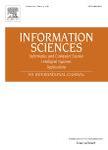版权所有:内蒙古大学图书馆 技术提供:维普资讯• 智图
内蒙古自治区呼和浩特市赛罕区大学西街235号 邮编: 010021

作者机构:Univ E London Sch Comp & Technol London E16 2RD England
出 版 物:《INFORMATION SCIENCES》 (信息科学)
年 卷 期:2008年第178卷第20期
页 面:3802-3812页
核心收录:
学科分类:12[管理学] 1201[管理学-管理科学与工程(可授管理学、工学学位)] 08[工学] 0812[工学-计算机科学与技术(可授工学、理学学位)]
主 题:modal learning adaptive function neural network snap-drift neural network handwritten digits recognition piecewise linear function
摘 要:A novel combination of the adaptive function neural network (ADFUNN) and on-line snap-drift learning is presented in this paper and applied to optical and pen-based recognition of handwritten digits [E. Alpaydin, F. Alimoglu for Optical Recognition of Handwritten Digits and E. Alpaydin, C. Kaynak for Pen-Based Recognition of Handwritten Digits http://***/similar to mlearn/databases/optdigits/ http://***/similar to mlearn/databases/pendigits/]. Snap-drift [S.W. Lee, D. Palmer-Brown, C.M. Roadknight, Performance-guided neural network for rapidly self-organising active network management (invited Paper), journal of Neurocomputing, 61 C, 2004, pp. 5-20] employs the complementary concepts of common (intersection) feature learning (called snap) and LVQ (drift towards the input patterns) learning, and is a fast, unsupervised method suitable for on-line learning and non-stationary environments where new patterns are continually introduced. ADFUNN [M. Kang, D. Palmer-Brown, An adaptive function neural network (ADFUNN) for phrase recognition, in: The International joint Conference on Neural Networks (IJCNN05), Montreal, Canada, 2005, D. Palmer-Brown, M. Kang, ADFUNN: An adaptive function neural network, in: The 7th International Conference on Adaptive and Natural Computing Algorithms (ICAN-NGA05), Coimbra, Portugal, 2005] is based on a linear piecewise neuron activation function that is modified by a novel gradient descent supervised learning algorithm. It has recently been applied to the Iris dataset, and a natural language phrase recognition problem, exhibiting impressive generalisation classification ability with no hidden neurons. The unsupervised single layer snap-drift is effective in extracting distinct features from the complex cursive-letter datasets, and the supervised single layer ADFUNN is capable of solving linearly inseparable problems rapidly. In combination within one network (SADFUNN), these two methods are more powerful and yet simple